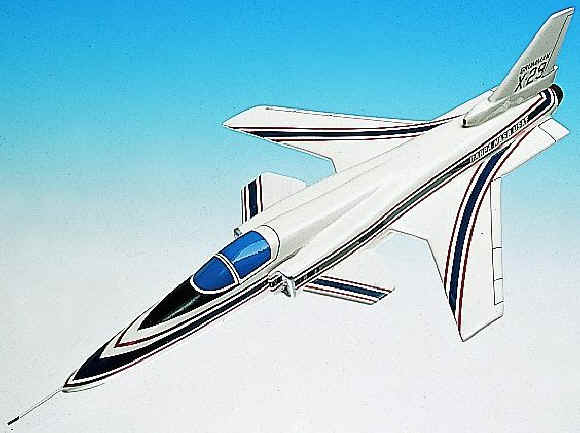|
|
| Grumann
X-29A FSW |
 |
The
X-29 was built to explore state-of-the-art technologies in
aircraft design. The most easily identified of these, the
forward-swept wing (FSW) was combined with advanced materials, a
forward mounted elevator (canard) and an electrical flight
control system. The purpose of this combination of features was
to test how well all these elements worked together before they
were used in future aircraft. Both Germany and the U.S.
experimented with FSW aircraft during World War II but did not
use them operationally. One problem with the new design was that
the wings could not be made rigid enough to keep them from
bending dangerously at higher speeds. In the 1970s, however,
composite materials became available, and wing structures could
be built that were both light and rigid.
Grumman began building the first of two X-29As in
1982. The program was administered by the U.S. Air Force and
jointly funded by the Defense Advanced Research Projects Agency
(DARPA), the Air Force, and the National Aeronautics and Space
Administration (NASA).
The first X-29A -made its initial flight on
December 14, 1984 at Edwards AFB, California. On December 13,
1985, during its 26th flight, this aircraft became the world's
first FSW aircraft to exceed the speed of sound in level flight.
After successfully completing the test program, the X-29A was
retired to the Air Force Museum in late 1994. The second X-29A
made its first flight on May 23, 1989 and continued to perform
test flights well into the 1990s.
|
|

|
Grumman X-29
From our Standard Series. 1/40th scale. 8.5"
wingspan x 16" long.
No. ABX2D-ST. Only $109.95 |
|
